Venturiales
- PMID: 32904190
- PMCID: PMC7452091
- DOI: 10.1016/j.simyco.2020.03.001
Venturiales
Abstract
Members of Venturiales (Dothideomycetes) are widely distributed, and comprise saprobes, as well as plant, human and animal pathogens. In spite of their economic importance, the general lack of cultures and DNA data has resulted in taxa being poorly resolved. In the present study five loci, ITS, LSU rDNA, tef1, tub2 and rpb2 are used for analysing 115 venturialean taxa representing 30 genera in three families in the current classification of Venturiales. Based on the multigene phylogenetic analysis, morphological and ecological characteristics, one new family, Cylindrosympodiaceae, and eight new genera are described, namely Bellamyces, Fagicola, Fraxinicola, Fuscohilum, Neofusicladium, Parafusicladium, Pinaceicola and Sterila. In addition, 12 species are described as new to science, and 41 new combinations are proposed. The taxonomic status of 153 species have been re-evaluated with 20 species excluded from Venturiales. Based on this revision of Venturiales, morphological characteristics such as conidial arrangement (solitary or in chains) or conidiogenesis (blastic-solitary, sympodial or annellidic), proved to be significant at generic level. Venturia as currently defined represents a generic complex. Furthermore, plant pathogens appear more terminal in phylogenetic analyses within Venturiaceae and Sympoventuriaceae, suggesting that the ancestral state of Venturiales is most likely saprobic.
Keywords: Bellamyces Crous, Coppins & U. Braun; Bellamyces quercus Crous, Coppins & U. Braun; Cylindrosympodiaceae Crous, M. Shen & Y. Zhang ter; Fagicola Crous, M. Shen & Y. Zhang ter; Fagicola fagi (Crous & de Hoog) Crous, M. Shen & Y. Zhang ter; Fraxinicola Crous, M. Shen & Y. Zhang ter; Fraxinicola europaea Crous, M. Shen & Y. Zhang ter; Fraxinicola fraxini (Aderh.) Crous, M. Shen & Y. Zhang ter; Fraxinicola italica Crous, M. Shen & Y. Zhang ter; Fraxinicola orni (M. Ibrahim et al.) Crous, M. Shen & Y. Zhang ter; Fuscohil`um Crous, M. Shen & Y. Zhang ter; Fuscohilum Crous, M. Shen & Y. Zhang ter; Fuscohilum rhodensis (Crous & M.J. Wingf.) Crous, M. Shen & Y. Zhang ter, Fuscohilum siciliana (Koukol) Crous, M. Shen & Y. Zhang ter; Multigene analysis; Neocoleroa cameroonensis Crous, M. Shen & Y. Zhang ter; Neofusicladium Crous, M. Shen & Y. Zhang ter; Neofusicladium eucalypti (Crous & R.G. Shivas) Crous, M. Shen & Y. Zhang ter; Neofusicladium eucalypticola (Crous & M.J. Wingf.) Crous, M. Shen & Y. Zhang ter; Neofusicladium regnans (Crous) Crous, M. Shen & Y. Zhang ter; New taxa; Niesslia iridicola (M.E. Barr) Crous, M. Shen & Y. Zhang ter; Niesslia parasitica (Ellis & Everh.) M. Shen & Y. Zhang ter; Niesslia vaccinii (Ellis & Everh.) Crous, M. Shen & Y. Zhang ter; Parafusicladium Crous, M. Shen & Y. Zhang ter; Parafusicladium amoenum (R.F. Castañeda & Dugan) Crous, M. Shen & Y. Zhang ter; Parafusicladium intermedium (Crous & W.B. Kendr.) Crous, M. Shen & Y. Zhang ter; Parafusicladium paraamoenum (Crous et al.) Crous, M. Shen & Y. Zhang ter; Pinaceicola Crous, M. Shen & Y. Zhang ter; Pinaceicola cordae (Koukol) Crous, M. Shen & Y. Zhang ter; Pinaceicola pini(Crous & de Hoog) Crous, M. Shen & Y. Zhang ter; Pseudosigmoidea excentrica (R.F. Castañeda et al.) Crous, M. Shen & Y. Zhang ter; Scab disease; Scolecobasidium aquaticum (Samerp. et al.) Crous, M. Shen & Y. Zhang ter; Scolecobasidium atlanticuum (A.M. Wellman) Crous, M. Shen & Y. Zhang ter; Scolecobasidium bacilliforme (Samerp. et al.) Crous, M. Shen & Y. Zhang ter; Scolecobasidium capsici (Crous & Cheew.) Crous, M. Shen & Y. Zhang ter; Scolecobasidium cordanae (Samerp. et al.) Crous, M. Shen & Y. Zhang ter; Scolecobasidium dracaenae (Crous) Crous, M. Shen & Y. Zhang ter; Scolecobasidium globale (Samerp. et al.) Crous, M. Shen & Y. Zhang ter; Scolecobasidium icarus (Samerp. et al.) Crous, M. Shen & Y. Zhang ter; Scolecobasidium macrozamiae (Crous & R.G. Shivas) Crous, M. Shen & Y. Zhang ter; Scolecobasidium minimum (Fassat.) Crous, M. Shen & Y. Zhang ter; Scolecobasidium musicola (Crous) Crous, M. Shen & Y. Zhang ter; Scolecobasidium olivaceum (A. Giraldo et al.) Crous, M. Shen & Y. Zhang ter; Scolecobasidium pandanicola (Crous & M.J. Wingf.) Crous, M. Shen & Y. Zhang ter; Scolecobasidium phaeophorum (Samerp. et al.) Crous, M. Shen & Y. Zhang ter; Scolecobasidium podocarpi (Crous) Crous, M. Shen & Y. Zhang ter; Scolecobasidium ramosum (A. Giraldo et al.) Crous, M. Shen & Y. Zhang ter; Scolecobasidium robustum (Samerp. et al.) Crous, M. Shen & Y. Zhang ter; Scolecobasidium sexuale (Samerp. et al.) Crous, M. Shen & Y. Zhang ter; Scolecobasidium verrucosum (Zachariah et al.) Crous, M. Shen & Y. Zhang ter; Sterila Crous, M. Shen & Y. Zhang ter; Sterila eucalypti Crous, M. Shen & Y. Zhang ter; Sympoventuria africana (Crous) Crous, M. Shen & Y. Zhang ter; Systematics; Tyrannosorus hanlinianus (U. Braun & Feiler) Crous, M. Shen & Y. Zhang ter; Tyrannosorus hystrioides (Dugan et al.) Crous, M. Shen & Y. Zhang ter; Tyrannosorus lichenicola Crous, M. Shen & Y. Zhang ter; Tyrannosorus pini-sylvestris Crous & R.K. Schumach.; Venturia; Venturia albae Crous, M. Shen & Y. Zhang ter; Venturia australiana Crous, M. Shen & Y. Zhang ter; Venturia caesiae Crous, M. Shen & Y. Zhang ter; Venturia finlandica Crous, M. Shen & Y. Zhang ter; Venturia peltigericola (Crous & Diederich) Crous, M. Shen & Y. Zhang ter; Venturia quebecensis Crous, M. Shen & Y. Zhang ter; Verruconis terricola (J. Ren et al.) Crous, M. Shen & Y. Zhang ter.
© 2020 Westerdijk Fungal Biodiversity Institute. Production and hosting by ELSEVIER B.V.
Figures


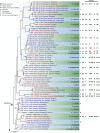













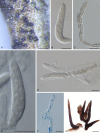




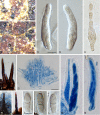


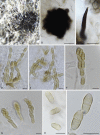














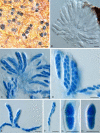



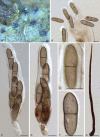
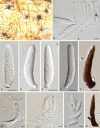
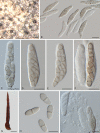





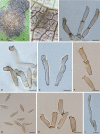



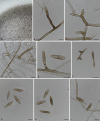



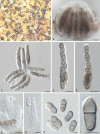


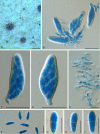



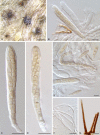
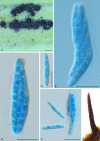
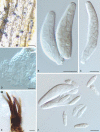


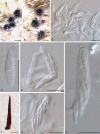
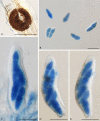



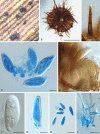
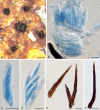



References
-
- Abbott E.V. Scolecobasidium, a new genus of soil fungi. Mycologia. 1927;19:29–31.
-
- Aderhold R. Revision der Species Venturia chlorospora, inaequalis und ditricha autorum. Hedwigia. 1897;36:67–83.
-
- Ando K., Nakamura N. Pseudosigmoidea: a new genus for a hyphomycete (ATCC 16660) formerly identified as Sigmoidea prolifera. Journal of General and Applied Microbiology. 2000;46:51–57. - PubMed
LinkOut - more resources
Full Text Sources
